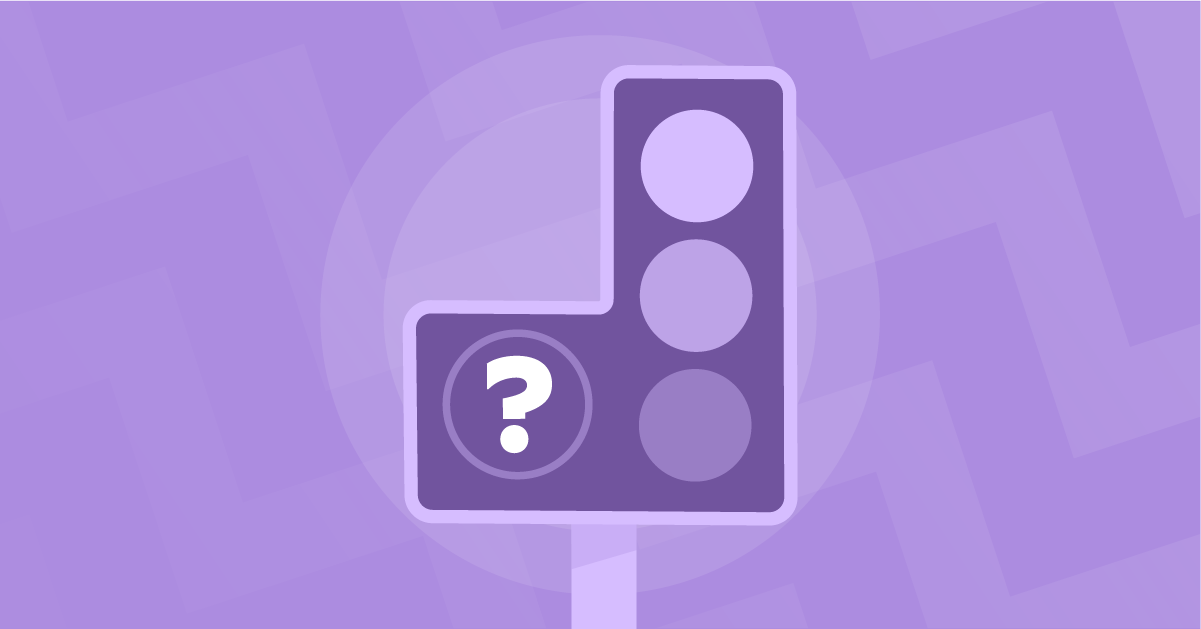Traffic lights are one of those things that most learner drivers are familiar with before they even start preparing for their theory test or practical driving test. From a pretty early age, we learn that green means ‘go’ and red means ‘stop’; so you may think you don’t need to spend much more time thinking about traffic lights.
However, the traffic light sequence can often be a pitfall for learner drivers. Given that you’re likely to drive through traffic lights on every journey, it’s important to make sure you’re confident with the traffic light sequence and how to approach them.
Traffic light sequence
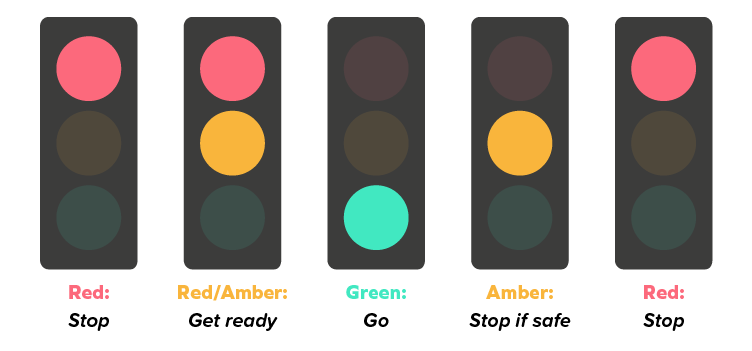
Red traffic lights
When traffic lights are red you must stop and wait behind the stop line. This applies to all road users, including cyclists. Put your handbrake on and wait for the lights to turn green.
Red and amber traffic lights
Red and amber traffic lights mean that the lights are about to change to green. Stop and wait behind the stop line. Prepare to go by putting the car into first gear, but don’t pass the stop line until the traffic lights turn green.
Green traffic lights
Green traffic lights mean you can GO! Find the biting point, release your handbrake and pull off. You should still make sure the path is clear for you to go before driving off. Give the car ahead time to move off and leave plenty of space.
Amber traffic lights
Amber traffic lights mean the lights are about to change to red. You should stop unless it’s not safe to; for example if you’ve already crossed the stop line or someone is driving very close behind you. It’s legal to drive through amber lights but make sure you only do it when necessary.
Traffic lights road sign
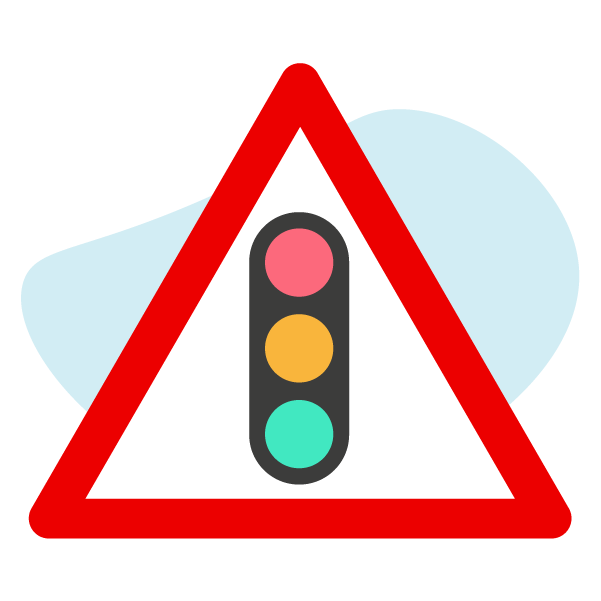
You may come across the traffic lights road sign when approaching lights. The sign is a red triangle which means it’s warning you about an upcoming hazard. This sign is just there to tell you that traffic lights are coming up. There won’t always be a road sign so it’s important to be prepared regardless. Check out our theory test guide to road signs for more info.
Approaching traffic lights
When you’re approaching a set of lights, you should get into the right lane as early as possible. Keep an eye on where they are in the traffic light sequence so you can anticipate what you’re going to have to do.
For example, if the lights have been green for a long time it’s likely you’re going to have to stop, so it’s a good idea to slow down. Even if you’re in a rush, you shouldn’t speed up to beat the lights, it could put you and other road users in danger.
Don’t forget to use your MSM (mirror, signal, manoeuvre) routine and check how close other cars and vehicles are to you as you’re approaching.
Stopping at traffic lights
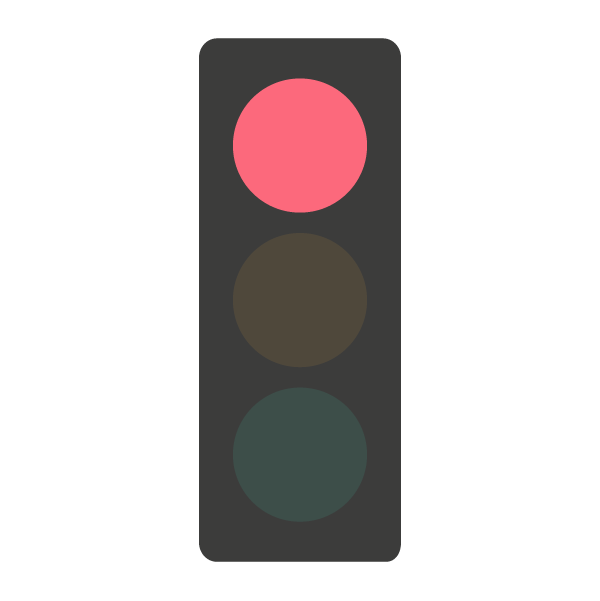
When you have to stop at a red light, you should always pull up before the stop line. The stop line is a solid white line on the road that shows you where you should not pass.
Sometimes, there might be a separate section ahead that’s reserved for cyclists. According to Rule 178 of the Highway Code drivers must stop at the first white line and avoid going in the area marked for cyclists.
This is to allow cyclists to be positioned ahead of other traffic. Make sure you leave plenty of room between you and the cyclist and give them time to move off when the lights turn to green. For more on keeping cyclists safe on the road – check out the dutch reach.
When you stop at a red light, it’s a good idea to put the handbrake on and move into neutral. This will give you a bit of a rest rather than waiting on the brake the whole time!
Green filter arrow
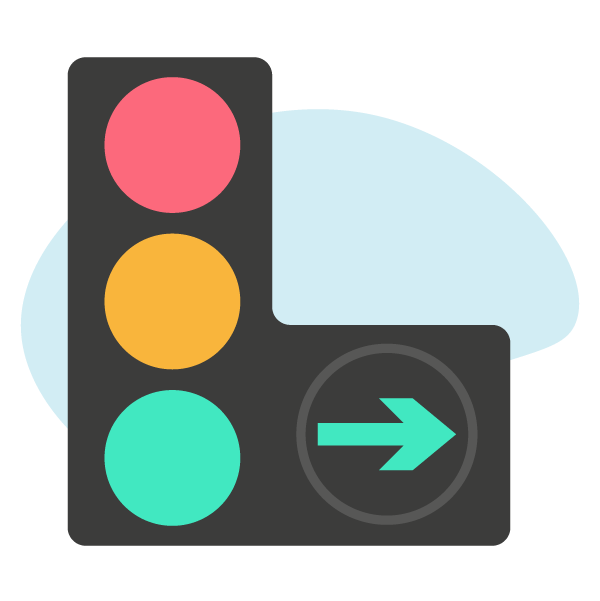
A green filter arrow allows traffic to go in the direction of the arrow. The green filter arrow may come on before or after the main green light in the traffic light sequence. While the green traffic filter light is illuminated, other lights may be on red meaning you have priority to turn.
What does a flashing amber light mean?
A flashing amber light means you can go when it’s safe to do so. You’ll find flashing amber lights at a pelican crossing, so this means you can go as long as there are no pedestrians crossing or about to cross the road. Remember, pedestrians still have priority even when the lights are flashing amber.
Who has priority when traffic lights are out of order?
When traffic lights are out of order, you should treat the junction as an unmarked crossroads which means that no one has priority. You shouldn’t assume you have the right to go and you’ll need to prepare to give way or stop. Be careful, other vehicles might assume they have priority.
Do traffic lights have cameras?
Some traffic lights do have cameras mounted to them. Traffic light cameras are most likely to be mounted in busy or high risk areas.
Cameras at traffic lights shouldn’t flash so you’re not likely to know you’ve been caught until you receive a notice of prosecution (NIP).
The cost of running a red light
The penalty for running a red light is usually a £100 fine and 3 penalty points on your driving license. However, if you don’t respond to the NIP you could be prosecuted and get 6 points and a maximum fine of £1000.
Don’t forget that you can still get penalty points on your provisional license.
Learning to drive?
To build up your confidence with traffic lights, it could be helpful to get some private driving practice outside of your lessons. With our learner driver insurance, you might be able to get cover from as little as 2 hours or right up to 180 days. If you’re borrowing a car from a friend or family member, it won’t even affect their no claims bonus if you need to make a claim.
